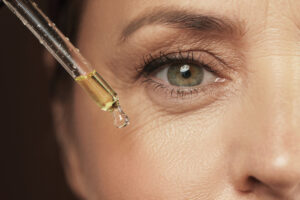Let’s talk about low blood pressure in elderly people!
Most people are aware that high blood pressure in elderly individuals can lead to serious medical problems, but low blood pressure in seniors gets far less attention. However, we shouldn’t overlook it because a blood pressure that drops too low can have just as serious effects on your health. It’s essential to know some things about it so that you can take proper care of yourself.
Let’s start with this: A low blood pressure reading isn’t necessarily a reason to panic. While high blood pressure is dangerous, even if you don’t know you have it, low blood pressure is usually not an issue unless you start dealing with symptoms like blurred vision or dizziness. If that occurs, you need to take action.
Symptomatic low blood pressure in elderly people can be very harmful because it increases the risk of a fall. In the worst-case scenario, it can lead to shock and even death.
This article will explain the basic facts about blood pressure, describe common signs of low blood pressure, and highlight a variety of factors that can cause such a condition. It’s important to note that the information below isn’t a substitute for individualized medical help you can get from a licensed healthcare provider. Always talk to your doctor before making any lifestyle changes that may affect your health.

Blood pressure basics
Blood pressure (BP) is a measurement of the force used to keep blood circulating throughout your body. This pressure is vital to ensuring that your tissues and organs get the nutrients and oxygen they need.
Blood pressure commonly goes up as we age due to the stiffening of the arteries; this is a condition with serious health consequences. In fact, in 2017, the American College of Cardiology and the American Heart Association redefined high blood pressure and how it should be managed in seniors. The new blood pressure guidelines for older adults are aimed at encouraging more aggressive treatment at an earlier stage to keep blood pressure levels from getting too high.
Conversely, sometimes BP levels can be lower than they should be. In other words, this happens when the force moving blood throughout the body is lower than expected.
What occurs when your blood pressure is low? In some cases, nothing. You might feel completely fine and require no treatment. However, if it gets too low, chances are you will experience symptoms like feeling dizzy or lightheaded.
Moreover, if your BP drops dangerously low, vital organs (like your brain) may not get enough oxygen and blood to function properly. In the worst-case scenario, you may go into shock and need emergency medical attention. Chronic, prolonged low blood pressure can be deadly if it results in the body’s organs being starved of essential nutrients.
Now that we’ve had this introduction, let’s talk about the symptoms!
Symptoms of low blood pressure in seniors
As long as you feel fine, a low blood pressure reading is usually nothing to worry about! Doctors aren’t usually concerned about a low BP in otherwise healthy people.
But when is blood pressure too low? You should see your doctor if you experience hypotension symptoms such as fatigue, nausea, blurry vision, dizziness, weakness, fainting (known as syncope), an irregular or rapid heartbeat, confusion or inability to concentrate shallow breathing, and pale, cold, clammy skin.
A condition called postural or orthostatic hypotension is common among older adults. It’s when a temporary, sudden drop in blood pressure occurs after a rapid change of position, such as when you go from sitting to standing.
Under normal circumstances, some blood rushes toward your legs when you stand up, but your body compensates by sending your heart the message to beat faster. If such compensations are delayed or don’t take place at all, your blood pressure can drop quickly. That can cause you to become woozy. Some experts suggest that up to 50% of older adults experience orthostatic hypotension.opera
You may also get light-headed due to a sudden drop in blood pressure after eating, particularly if you’ve had a large meal with lots of carbohydrates. This is known as postprandial hypotension. It also commonly affects seniors. It’s especially prevalent among older adults who have disorders that affect the autonomic nervous system, such as Parkinson’s disease and diabetes.

Causes of low blood pressure
There’s a wide range of factors that can explain low blood pressure readings. For example, dehydration can cause low blood pressure because it reduces blood volume. Diabetes can also cause low systolic pressure but low diastolic pressure. And conditions like bradycardia, which is a very low heart rate, can keep the heart from pumping enough blood to sustain adequate pressure.
Medications are also a common factor causing low blood pressure in older adults. Medicine that is used to treat high blood pressure, including alpha blockers, beta-blockers, calcium channel blockers, and diuretics, can go too far and cause hypotension instead. Moreover, some prescription medicines for erectile dysfunction (such as sildenafil and tadalafil), Parkinson’s disease (such as levodopa and dopamine agonists), and depression (such as doxepin and imipramine) can trigger low blood pressure.
Other hypotension causes can include excessive heat, major blood clots, extended bed rest, an underactive thyroid, hypoglycemia (low blood sugar), anemia due to a lack of folate and vitamin B-12, and Addison’s disease (a disease of the adrenal glands).
A sudden drop in blood pressure can be caused by anaphylactic reactions, uncontrolled bleeding, severe infections, or extreme dehydration due to vomiting, diarrhea, or fever.
To identify the cause of your hypotension, your doctor may conduct a blood test to check for anemia or other potential issues with your blood sugar levels, an electrocardiogram (ECG) to look for abnormalities in your heart’s pulse rate and rhythm, or an echocardiogram to get images of the size and shape of your heart and see how well it’s functioning.
These are the most common tests to pinpoint the cause of low blood pressure. However, there are other methods that doctors can use to do that. There’s the Valsalva maneuver, which involves monitoring the blood pressure while the patient takes a deep breath and attempts to block out their closed mouth. This allows the doctor to check for problems with your autonomic nervous system.
Another method is an exercise stress test, which assesses your heart’s performance during periods of physical activity. A third way is through a tilt table test, in which you’re hooked up to an ECG machine and blood pressure monitors, and then secured to a table that can quickly switch you from a horizontal to an upright position. This allows your doctor to see how your blood pressure reacts to the changes in your body position.

Treatment for low blood pressure in seniors
If you don’t experience any symptoms of low blood pressure, treatment is likely unnecessary. As stated above, hypotension on its own isn’t typically an issue. In fact, it’s often taken as an indicator of good health.
But if it’s affecting your well-being, it’s important to take steps to address it. Low blood pressure is usually treated in elderly individuals by first figuring out the underlying cause. If your medication regimen is the culprit, your healthcare provider may be able to change your medications or adjust your dosages. By the way, if you find it challenging to keep your medications organized, here’s a pill dispenser that could help.
If your low BP pressure is a result of dehydration, fluid replacement may solve the problem.
In some cases, you may need treatment specifically for your hypotension. Two of the most commonly prescribed drugs are midodrine and fludrocortisone. Midodrine prevents your vessels from expanding, thereby boosting blood pressure. Fludrocortisone is a steroid that makes the body retain fluid and sodium, thus raising blood pressure and increasing blood volume.
It’s important to note that many people are able to manage their low blood pressure through diet and lifestyle changes rather than medical treatment. One of the best tips to fix your low blood pressure is to drink more water.
Consuming additional fluids can increase blood volume and prevent dehydration. Having a glass of water before a meal or sleep can sometimes help avoid sudden drops in blood pressure. Sports drinks containing electrolytes can also prove beneficial, but try to avoid ones with high amounts of sugar.
Also, going too long between meals can mess with your blood sugar levels. Not to mention that indulging in heavy meals can result in a sudden drop in blood pressure as the blood circulates from your brain to your digestive system to help your body break down the food. As a general rule of thumb, it’s a good idea to have smaller meals five or six times a day.
If you’re dealing with low blood pressure, limit the booze, as the alcohol is dehydrating and can drive your blood pressure even lower.
Another tip would be to increase your salt intake. Salt causes your body to retain more fluids, which increases your blood pressure. Your healthcare provider may recommend adding a bit of salt to your meals or taking salt tablets. Olives, beets, and carrots are a few examples of foods that contain naturally higher levels of sodium. You should also be aware of potassium-rich foods like bananas and apricots, as they lower blood pressure and make your body lose sodium through urine.
Cutting back on carbohydrates (especially refined ones such as pasta and white bread) may help keep you from feeling woozy after you eat. Moreover, foods that are high in vitamin B-12 and folate can help alleviate hypotension that is caused by anemia. Eggs, leafy greens, fortified cereals, and asparagus are good choices.
If you know any sudden body movements make you dizzy, make slower transitions. Change positions gradually and slowly. If you’re lying down, sit up and march your feet or dangle your feet gently for a few minutes before you try to stand. Once you’re on your feet, stay still for a while until you feel steady enough to walk.
Pay attention to high temperatures. They can cause blood vessels to dilate, which lowers blood pressure. Moreover, sweating out fluids can cause dehydration and reduced blood volume. So be careful not to do anything too strenuous and stay out of the sun when it’s really warm.
Avoid spending long periods in saunas or hot tubs. You might also want to keep a nonslip chain in your shower if your low blood pressure is making you feel dizzy.
Another thing that could help is compression stockings. They promote better blood circulation by compressing the leg veins. This keeps blood from pooling in your legs and shifts it toward other parts of the body. Styles for both women and men are available.
If you found our article helpful, you may also want to read The Top 7 Exercises You Should Avoid After 60.



















